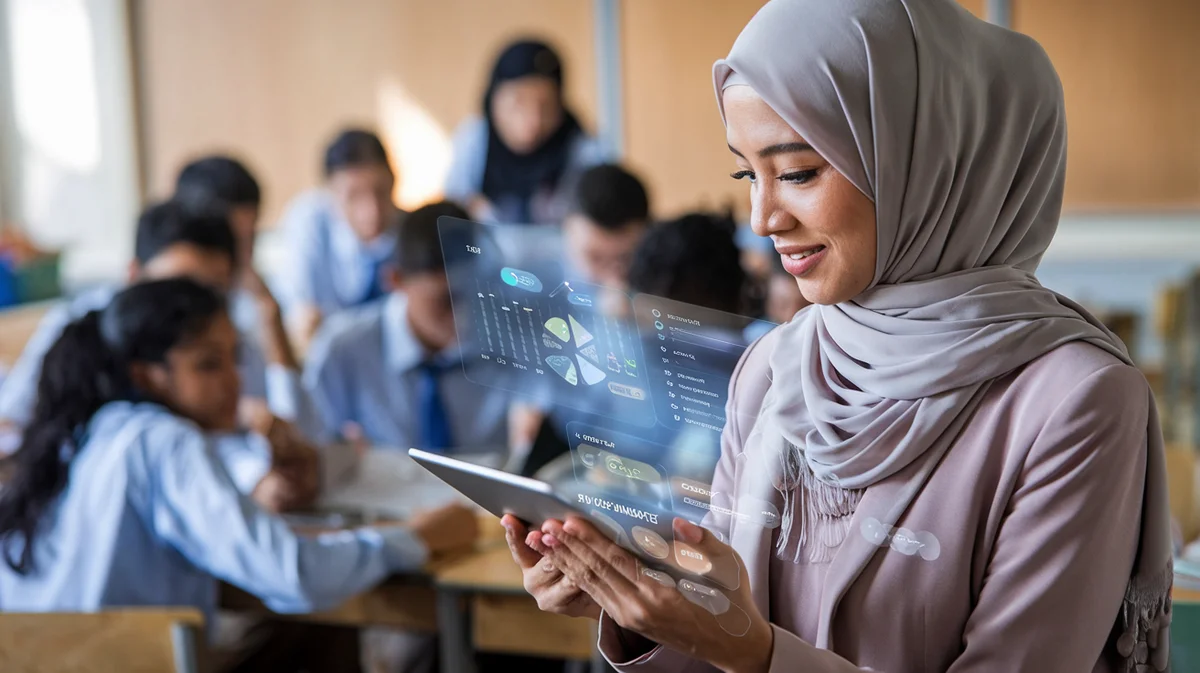Beyond Helpers: Inclusive Classroom Independence for a Future-Ready Education


wp:paragraph
In today’s rapidly evolving educational landscape, the journey toward inclusive classroom independence goes far beyond simply providing support. At UNOWA, we believe in empowering every learner and educator to thrive — transforming classrooms into dynamic, equitable spaces where all students can participate, engage, and succeed.
/wp:paragraph
wp:heading {"level":2}
The Shift: From Helpers to Empowerment
/wp:heading
wp:paragraph
Inclusive education is not just a policy — it’s a movement. Since the Salamanca Statement in 1994, the global community has recognized that students of all abilities should learn together in mainstream settings, with the right supports in place. Yet, fewer than half of children with diverse cognitive and intellectual abilities are in fully inclusive classrooms, despite overwhelming evidence that such environments benefit everyone involved.
/wp:paragraph
wp:quote
“It’s about making sure everybody can come into the classroom and see a pathway to their future.” — Kris Astle, Education Strategist, SMART Technologies
/wp:quote
wp:paragraph
Our mission at UNOWA is to move beyond the traditional “helper” model. Instead, we focus on building systems and solutions that foster true independence — where assistive technology, adaptive curricula, and teacher empowerment are seamlessly integrated for large-scale impact.
/wp:paragraph
wp:heading {"level":2}
Why Inclusive Classroom Independence Matters
/wp:heading
wp:heading {"level":3}
Academic and Social Benefits
/wp:heading
wp:paragraph
Research consistently shows that inclusive classrooms lead to improved academic and social outcomes for all students — not just those with disabilities. When every child is given the tools and opportunities to participate fully, the entire learning community grows stronger, more empathetic, and better prepared for the future.
/wp:paragraph
wp:list
- Inclusive education reduces discrimination and increases civic participation, employment, and community integration for marginalized groups.
- Students in inclusive settings demonstrate higher achievement, better communication skills, and greater self-confidence.
/wp:list
wp:heading {"level":3}
System-Wide Impact
/wp:heading
wp:paragraph
Inclusive classroom independence is not a one-off intervention. It requires coordinated efforts across policy, leadership, teacher preparation, and community engagement. Our approach at UNOWA is holistic, ensuring that every stakeholder — from ministries of education to classroom teachers — has the resources and knowledge to drive meaningful change.
/wp:paragraph
wp:heading {"level":2}
Key Strategies for Achieving Inclusive Classroom Independence
/wp:heading
wp:heading {"level":3}
1. Assistive Technology: Enabling Participation
/wp:heading
wp:paragraph
Digital tools, adaptive devices, and accessible learning platforms are revolutionizing the way students with diverse needs engage with content. At UNOWA, our solutions like MIKKO and Ulabs are designed to:
/wp:paragraph
wp:list
- Support differentiated instruction, allowing students to learn in ways that suit their unique styles.
- Bridge gaps in access and participation, especially in response to challenges like the COVID-19 pandemic.
- Provide real-time analytics and feedback, empowering educators to tailor their teaching for maximum impact.
/wp:list
wp:paragraph
For more on the role of assistive technology in education, see UNESCO’s guidelines.
/wp:paragraph
wp:heading {"level":3}
2. Teacher Training: Building Capacity for Inclusion
/wp:heading
wp:paragraph
Ongoing professional development is essential for teachers to effectively implement inclusive practices. Our training programs focus on:
/wp:paragraph
wp:list
- Understanding diversity and fostering inclusive classroom cultures.
- Practical strategies for curriculum adaptation and the use of assistive technologies.
- Collaborative problem-solving and continuous improvement.
/wp:list
wp:paragraph
According to the European Agency for Special Needs and Inclusive Education, teacher preparedness is one of the strongest predictors of successful inclusion.
/wp:paragraph
wp:heading {"level":3}
3. Curriculum Adaptation: Flexibility for All Learners
/wp:heading
wp:paragraph
A flexible, curriculum-aligned approach is at the heart of inclusive education. We work with schools and ministries to:
/wp:paragraph
wp:list
- Adapt curricula to accommodate different learning needs and styles.
- Involve students and parents in setting learning goals and making decisions.
- Ensure that adaptations are relevant, effective, and aligned with national standards.
/wp:list
wp:paragraph
Read more about curriculum adaptation best practices at UNICEF’s Inclusive Education Resources.
/wp:paragraph
wp:heading {"level":3}
4. Systemic Reform: Policy, Leadership, and Community
/wp:heading
wp:paragraph
True transformation requires more than classroom-level change. We partner with governments, international organizations, and local leaders to:
/wp:paragraph
wp:list
- Align national policies with international standards and best practices.
- Equip schools with the necessary resources, support staff, and infrastructure.
- Foster collaboration among educators, families, and communities.
/wp:list
wp:paragraph
The World Bank’s Inclusive Education Policy provides a comprehensive overview of policy frameworks and funding opportunities.
/wp:paragraph
wp:heading {"level":2}
Regional Focus: EU, MENA, and CIS
/wp:heading
wp:heading {"level":3}
European Union
/wp:heading
wp:paragraph
The EU is a leader in promoting inclusive education through directives, funding, and cross-border collaboration. However, implementation varies, and ongoing investment in teacher training and technology is critical.
/wp:paragraph
wp:heading {"level":3}
MENA Region
/wp:heading
wp:paragraph
Countries like Saudi Arabia, UAE, and Qatar are making significant strides in aligning with international standards, often with support from UNESCO and the World Bank. There is a growing emphasis on leveraging technology and large-scale teacher training to accelerate reform.
/wp:paragraph
wp:heading {"level":3}
CIS Countries
/wp:heading
wp:paragraph
Kazakhstan, Uzbekistan, Armenia, and others are increasingly adopting inclusive policies, but face challenges related to resources and infrastructure. Our experience in these regions has shown that tailored solutions and strong local partnerships are key to sustainable impact.
/wp:paragraph
wp:heading {"level":2}
UNOWA’s Approach: Empowering Institutions, Educators, and Students
/wp:heading
wp:paragraph
With over 15 years of experience and more than 300 national projects delivered, we are uniquely positioned to support large-scale educational transformation. Our comprehensive solutions include:
/wp:paragraph
wp:list
- MIKKO: Inclusive education systems for special education needs (SEN).
- Ulabs: STEM innovation labs and curriculum-aligned content.
- Teacher Training: Professional development for inclusive practices.
- Analytics: Data-driven insights for continuous improvement.
/wp:list
wp:paragraph
We believe every child deserves access to quality education, regardless of their abilities. By working together, we can create inclusive classroom independence that transforms learning experiences for the better.
/wp:paragraph
wp:paragraph
Learn more about our mission and solutions at UNOWA.
/wp:paragraph
wp:heading {"level":2}
Frequently Asked Questions
/wp:heading
wp:heading {"level":3}
What is inclusive classroom independence?
/wp:heading
wp:paragraph
Inclusive classroom independence refers to empowering all students — including those with special educational needs — to participate, engage, and succeed in mainstream classrooms with minimal reliance on external helpers. This is achieved through adaptive curricula, assistive technology, and teacher empowerment.
/wp:paragraph
wp:heading {"level":3}
How does assistive technology support inclusion?
/wp:heading
wp:paragraph
Assistive technology enables students with diverse needs to access and engage with learning materials, participate in classroom activities, and express themselves in ways that suit their abilities. It also helps teachers differentiate instruction and monitor progress.
/wp:paragraph
wp:heading {"level":3}
Why is teacher training important for inclusive education?
/wp:heading
wp:paragraph
Effective inclusion requires teachers to understand diversity, adapt curricula, and use technology confidently. Ongoing professional development ensures that educators are equipped with the latest strategies and tools to support all learners.
/wp:paragraph
wp:heading {"level":3}
What role do governments and international organizations play?
/wp:heading
wp:paragraph
Governments and organizations like UNESCO, UNICEF, and the World Bank provide policy guidance, funding, and technical support for inclusive education reforms. Their involvement is crucial for scaling up best practices and ensuring sustainability.
/wp:paragraph
wp:heading {"level":3}
How can schools get started with inclusive classroom independence?
/wp:heading
wp:paragraph
Schools should invest in teacher training, adopt flexible curricula, integrate assistive technology, and foster a culture of acceptance and collaboration. Partnering with experienced organizations like UNOWA can accelerate the journey toward inclusive, future-ready education.
/wp:paragraph
wp:paragraph
For further reading, explore these resources:
/wp:paragraph
wp:list
- UNESCO: Inclusion in Education
- European Agency for Special Needs and Inclusive Education
- UNICEF: Inclusive Education
- World Bank: Inclusive Education
- UNOWA
/wp:list
wp:paragraph
Let’s work together to empower every learner and educator — moving beyond helpers to achieve true inclusive classroom independence.
/wp:paragraph








